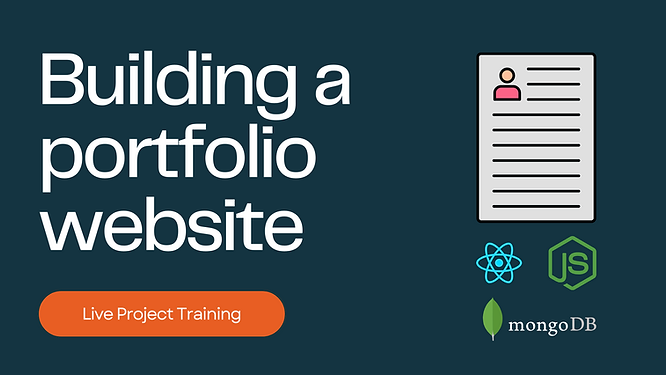
Category:
Web Development
Difficulty:
Beginner
Prerequisite(s):
HTML, CSS, JavaScript
Skills to be Learned:
Web development, CMS integration, Content creation
Building a portfolio website
A portfolio website is a great way to showcase your skills and experience to potential employers or clients. It can be a simple one-page site or a more complex site with multiple pages and features.
Project Details
Project Goal:
To create a visually appealing and informative portfolio website that showcases your skills and experience to potential employers or clients.
Project Scope:
The project will involve the following:
Planning and wireframing the website structure.
Designing the website layout and user interface.
Developing the website using HTML, CSS, and JavaScript.
Integrating with a content management system (CMS).
Adding content to the website, such as text, images, and videos.
Testing the website on different devices and browsers.
Project Timeline:
The project can be completed within 1-2 weeks, depending on your experience and the complexity of the website.
Project Deliverables:
The final deliverables of the project will include:
A fully functional portfolio website.
The website's source code.
Any design files or documentation created during the project.
Project Steps
Planning and Wireframing: The first step is to plan the structure of the website and create wireframes. This will help you to visualize the layout of the website and identify the content that needs to be included.
Design: Once the wireframes are approved, you can start designing the website layout and user interface. This includes choosing the colors, fonts, and images that will be used on the website.
Development: The next step is to develop the website using HTML, CSS, and JavaScript. You can use a CMS to make the development process easier.
Content Creation: Once the website is developed, you need to add content to it. This includes text, images, videos, and any other relevant information.
Testing: The final step is to test the website on different devices and browsers to make sure that it is working properly.
Project Tips
Use a CMS to make the development process easier. A CMS will allow you to easily add, edit, and manage the content on your website.
Use high-quality images and videos. Images and videos are a great way to showcase your work. Make sure to use high-quality images and videos that are relevant to your field.
Keep the website simple and easy to navigate. The website should be easy to navigate so that visitors can quickly find the information they are looking for.
Use clear and concise language. The writing on the website should be clear, concise, and easy to understand.
Proofread the website carefully. Before you launch the website, be sure to proofread it carefully for any errors.
Get feedback from others. Ask friends, family, or colleagues to review your website and provide feedback. This will help you to identify areas where you can improve.
Building a portfolio website is a great way to showcase your skills and experience to potential employers or clients. By following these steps and tips, you can create a website that will make a lasting impression.